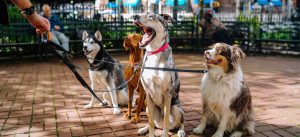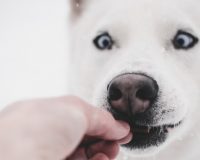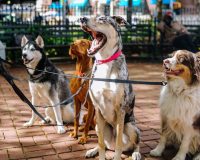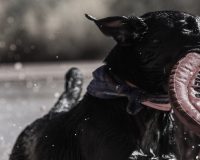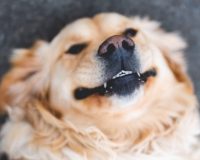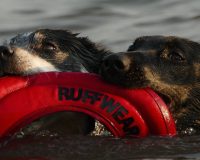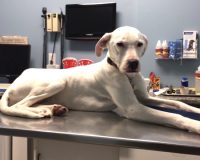Municipalities across Canada have done an exemplary job providing the public with access to designated, dog-friendly parkland. All of this beautiful space is ours to use freely, but with some important safety caveats.
On-leash areas include public-use parks and trails and, of course, sidewalks. Keep dogs leashed at all times, without exception, in these areas. There are a quantity of excellent reasons why this law must be upheld by owners.
Designated off-leash areas include designated dog parks and green, wood chip or pea-gravel spaces. Most have city-built fencing to keep the dogs safely inside the boundaries to eliminate the incidence of bolting or lost dogs.
Check your City’s bylaws to find out more about municipal requirements.
Leashing dogs in these areas is a legal requirement. Allowing a dog off-leash in an on-leash area poses liabilities to the dog and owner.
Scenario 1: If your roaming dog loses control and injures another dog or person, you are financially liable for all damage, and the dog may suffer legally-imposed consequences as well (ie: muzzle order, eventual euthanasia under the three-time rule).
Scenario 2: If your roaming dog makes other dogs to react to him/her, causing injury, then the owner of the injuring dog is financially liable for any damage resulting from negligence. But you’re not off the hook; legal consequences can follow for both parties.
The nicest dogs in the world are capable of reacting spontaneously to stimuli they see as a threat, and teeth are teeth, no matter the breed.
Please keep dogs leashed in on-leash environments.
Not all dogs are off-leash dogs
Like us, dogs have personalities and their own set of tolerances. Not all dogs are leash-free dogs, by nature. Socialization is a training and process that is best started young, around the 4-5 month mark, after acquiring all mandatory puppy vaccinations. Waiting until your pup is a year or older before socializing is not advisable. Start early if you want a socialized pup, or one that is comfortable around other dogs.
A professional trainer can help owners learn to train their pets and manage behaviours effectively, on-leash and in socialized settings. The relationship training creates between owner and pet helps the pet to gain confidence, which builds and expands out to any setting. But if your dog isn’t on board with socialization, then don’t force it. This could mean the difference between a happy, non-aggressive (fearless) dog, and a stressed, aggressive (fearful) dog. Let your dog set his or her pace.
In On-Leash areas, here are some good Dos and Don’ts, to be used as a guide:
Please don’t let your pup charge up to another, while on leash. The leash itself makes many pups feel vulnerable and an impolite greeting can create instant fear and aggression. Leash walking and polite greetings are basic skills that all pups/owners should learn through puppy school.
Understand that not all people out on a stroll want to stop and chat.
Young puppies are a marvel but some dogs may want to shake them like a toy. Make sure puppies are walked on a short leash (4-foot is recommended) by an adult who knows what to do if a problem begins.
Watch and read body language. If your, or an approaching, dog slows and becomes a little too intense, growls deeply or leans forward and holds ears back, move away. That is classic body language, indicating a bad situation is within seconds from happening.
CDWA strongly recommends that dogs be walked by adults, not children under the age of 16. There are competence and legal issues with allowing minors to walk dogs.
Loud noises cause many dogs to bolt and become lost or badly injured by cars.
Your pet might be docile, but others aren’t necessarily. If your pet is seen as a tasty treat, then he is a target. Keep your pet leashed and close to you, regardless of his disposition, or that of others.
Leashes, themselves, are important to consider. Flexi leashes are problematic on sidewalks and in areas where there are many dogs. If you have a puppy or small dog that others (dogs, predatory birds) may view as prey, use a shorter, non-flexible leash. It’s sound practice to use a leash that is between 4-6 feet long when in public spaces, even with leash-trained pups. This helps owners minimize injury to themselves as well, by limiting the damage of pups who lunge.
Injury to pet or person. Any spike in adrenaline can cause a quick reaction and things can get out of control fast. Injuries to persons will result in a muzzle order that should be followed for everyone’s protection, including the offending dog. Injuries to another pet will produce the same result, depending on severity. All of this goes away if a dog is on-leash.
If your pup is great at home but aggressive in public, hire a dog trainer to form a plan and give you effective management techniques. Use a muzzle, if recommended. This protects dog, owner and others. Muzzles may seem extreme but are a very good, practical tool: dogs and people instinctively stay away from muzzled dogs. And they minimize the opportunity for bites or injury from attacks.
Still have questions? Ask the CDWA.


